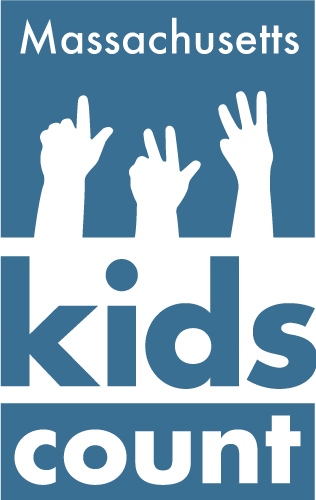Sometimes difficult choices don’t need to be so painful.
At the end of May, the Senate finalized its budget blueprint for the fiscal year that starts in July (FY 2025), setting up a 6-member conference committee where differences with the House FY 2025 budget are currently being settled. The budget plans in both branches aim to make important but different new investments to sustain and build upon ongoing improvements in education and transportation, made possible through the Fair Share “millionaire’s tax.”
Settling these differences involves painful choices and forestalled opportunities that may in large part be unnecessary. Revenues collected by the Fair Share surtax have outpaced the official FY 2024 estimate of $1 billion by a wide margin, bringing in at least $1.838 billion in the first ten months of the fiscal year. This strongly suggests that projections made back in December that Fair Share would raise $1.3 billion in FY 2025 are also far too low. Based on the updated information, lawmakers could confidently revise their Fair Share revenue estimate for FY 2025 upwards by several hundred million dollars.
Doing so would allow budget writers from both legislative chambers greater room to combine their investment proposals for transportation and education. These are the two areas where the new Fair Share Amendment to the constitution requires “millionaire’s tax” revenue to be invested. In transportation, lawmakers could invest in long-term improvements for the MBTA, while also repairing local bridges, and sustaining regional transit ridership growth through improved fare-free service. Likewise, lawmakers could improve higher education, K-12 schooling, and early education instead of deferring improvement and forestalling momentum in one or more of these areas. These investments would promote widely shared prosperity and advance equity by disproportionately supporting communities of color.
Greater Public Investments Made Possible
It is not unusual for the Legislature to adjust spending plans midway through the debate over the next year’s budget when it becomes clear that initial revenue projections are badly outdated. Matching investments to available resources is appropriate and desirable. Raising the FY 2025 Fair Share revenue estimate to something midway between likely collection totals for FY 2024 (probably approaching or exceeding $2.0 billion) and the current FY 2025 estimate of $1.3 billion, still would leave a buffer of hundreds of millions of dollars if actual FY 2025 Fair Share collections drop off from FY 2024 levels.
Moreover, due to the large influx of Fair Share dollars in FY 2024, future Fair Share spending will be backstopped by substantial reserves. Around a billion dollars in Fair Share funds will be available between the separate rainy day fund for Fair Share expenditures and the fund for supplementary Fair Share spending. These reserves are in addition to the small amount of Fair Share revenues collected but not yet accounted for as part of FY 2023, as well as the Commonwealth’s unprecedentedly large general rainy day fund that is available for potential revenue shortfalls.. This Stabilization Fund has reached about $8.4 billion in FY 2024 and is anticipated to reach about $9 billion by the end of this calendar year.
Transportation
The House and Senate put forward differing proposals to invest Fair Share revenue in transportation to improve the performance, safety, and equity of roads, bridges, and public transportation systems. Outside of Fair Share investment, the House and Senate each put forward nearly identical proposals to spend $960 million in transportation, plus $1.465 billion in sales taxes automatically transferred to the MBTA. Outside of Fair Share investments, both the House and Senate would basically replicate the FY 2024 funding amounts for the MBTA and the 15 regional transit authorities (RTAs).
With Fair Share revenue, the House proposes a variety of timely investments for the MBTA that are absent from the Senate proposal: $75 million for capital investments, $65 million for reserves for hiring workforce and investing in safety, $40 million for a new MBTA academy to create a training skills pipeline for the public transit workforce much like police academies, and $35 million for an MBTA Resilient Rides program to protect infrastructure from climate change, especially in economic justice communities. The Senate does propose $24.5 million in MBTA commuter rail capital improvements that the House does not. Neither of these transportation proposals would fully solve the MBTA’s anticipated operating budget shortfall next year, but the House in particular would make a variety of positive, far-sighted investments towards the T’s long-term improvement.
Meanwhile, the Senate would provide more robust municipal support of bridges and roads, and greater investment in regional bus service around the state. The Senate proposes $125 million (compared to $25 million by the House and $100 million in the FY 2024 budget) to aid municipalities for maintaining bridges and roads; plus a Senate proposal of $15 million specifically to help municipalities with small bridges and culverts. The Senate proposes $120 million in Fair Share funding and grants for RTAs (compared to $90 million proposed by the House). The Senate RTA funds would include $40 million to enable RTAs to operate fare-free year round, building on the success of some regions that have already eliminated the most regressive form of revenue. Eliminating fares will both also enable faster, more convenient service, and advance equity by disproportionately aiding communities of color.
There is also considerable overlap between the House and Senate budget proposals to use Fair Share revenue for transportation. Both chambers propose to begin a practice of annually dedicating $250 million in Fair Share revenue to the Commonwealth Transportation Fund, at least in part to finance future bonds that would support capital investments at MassDOT, the MBTA, and RTAs. Likewise, both chambers proposed very similar amounts for an MBTA reduced-fare program and support for MBTA ferry service.
Higher Education
The Senate budget took bolder action than the House to advance higher education affordability. This includes allocating $117.5 million to combine several initiatives that would together achieve universal tuition free community college. Likewise, the Senate would provide $105 million for Financial Aid Expansion, $25 million more than the FY 2024 investment and $21 million more than the House proposes for FY 2025. So far, the financial aid expansion program has covered all or part of remaining tuition costs for tens of thousands of low-income students as well as providing stipends to cover living costs. This stepped-up effort should particularly benefit students at higher cost UMass and state university campuses. These Senate proposals, building on other recent initiatives that use Fair Share surtax revenue, will move us closer to broadly available free public higher education for all students. The House plan for higher education was stronger in other areas including expansion of the SUCCESS wraparound student support initiative to state universities and providing $10 million for higher education capital projects.
Early Education
The House and Senate each propose a different mix of funding and policy changes to support families, educators, and child care providers. Much of the proposed funding is for operational grants to early education and care providers (C3 grants), the pandemic-era program that the Commonwealth maintained after federal pandemic aid expired. Both the House and Senate propose to codify the C3 grant program into law and maintain the same $475 million funding level for grants as in FY 2024, with the House proposing $175 million from Fair Share spending and the Senate proposing $150 million. For the House, one of the proposed funding sources for C3 grants is from the creation of an online lottery system that the Senate has rejected in previous years.
In order to ration the same funding amount for grants as FY 2024 across a growing number of participating providers, the House and Senate propose different funding systems for child care providers. They also propose different measures to prioritize greater public needs. The House proposes a system that would direct more funding to providers enrolling a greater percentage of children receiving subsidized care. The Senate similarly calls for creation of a formula prioritizing C3 grants for the highest-need children and families, and would require early care providers to demonstrate a willingness to accept children receiving child care subsidies in order to receive operational grants. Similar to the Governor’s proposal, the Senate proposal thoughtfully addresses the constitutional mandate that Fair Share revenues support public education by requiring that C3 grants funded with Fair Share revenues only be awarded to providers enrolling at least 50 percent subsidy recipients. The House took a weaker approach to honoring the public education mandate for Fair Share by allowing surtax dollars to be used for grants to providers enrolling as few as one percent of children with subsidies. Both chambers also include important language to ensure funds are targeted to providers in greater need by limiting the grant amounts that can be awarded to certain for-profit child care organizations, with the House including slightly tighter restrictions.
Both the House and the Senate also propose to use Fair Share surtax revenue to reduce the child care waitlist for families. The House proposes $30 million for waitlist reduction. The Senate proposes $80 million to reduce the waitlist and also to expand eligibility for families to receive child care subsidies by immediately raising the income limit from 50 percent of the state median income (SMI) level to 85 percent SMI, and eventually up to 125 percent SMI as funding becomes available. This would allow the Commonwealth to meet the child care needs of more low to middle income families.
K-12 Education
Both the House and Senate budget proposals would meet the obligations of the Student Opportunity Act (SOA) K-12 funding plan and provide $6.90 billion in Chapter 70 aid for the fourth year of the plan. This is an increase of over $300 million in Chapter 70 aid to support schools across the state. Funding for these proposals would be achieved outside of Fair Share surtax revenues and the proposals are largely identical to one another.
The House and Senate do offer important but different opportunities to improve schools using Fair Share revenue. The House proposes $30 million for the “Literacy Launch” program that appeared in the Governor’s proposal to improve best practices and materials across the state, whereas the Senate would provide $10 million. The Senate includes $7.5 million for establishment of a mental and behavioral health framework proposed by the Governor and absent from the House proposal. Likewise, the Senate included $5 million that the House omitted for the Innovation Pathways program that connects young people with hands-on learning experiences and connections to employers in growing fields in the state economy. Conversely, the House budget allocated $10 million in Fair Share funds for schools to enhance clean energy and green infrastructure projects that were not included in the Senate plan.
Unfortunately, neither House nor Senate proposals address an unintended inadequacy with SOA funding that emerged as a result of the high inflation of recent years. If left uncorrected, this will permanently depress state support for school districts. The SOA limits annual inflation adjustments to 4.5 percent. As a result, the prior two fiscal years, where inflation exceeded 4.5 percent, depressed the value of school aid in those years and going forward. To fully fund SOA in a way that would keep up with inflation, the legislature would need to have allocated an additional $465 million for FY 2025. This issue is contributing to significant budget challenges and dozens of educator positions being cut, especially in low-income communities that depend more on Chapter 70 aid. Because each year’s formula is based on the previous year’s funding, the gap will grow and continue to negatively impact schools until it is addressed.
Outside of Education and Transportation
As described above, some of the biggest differences between House and Senate proposals are in education and transportation because Fair Share offered new opportunities for investment. Nevertheless, important proposals in other areas also hang in the balance during conference negotiations.
Some of these spending proposals under negotiation involve relatively small dollar amounts, but would provide large benefits for the affected families. For instance:
- The House (but not the Senate) proposes a new line item that would provide $2.5 million for a right to counsel pilot to provide legal representation to tenants and owner-occupants with low-incomes during eviction proceedings. Funding this pilot in the Conference Committee’s budget would provide a major equity improvement to how evictions are processed and help level the playing field; typically landlords have legal representation at these proceedings while tenants do not.
- The Senate (but not the House) proposes a 10 percent grant increase for Emergency Aid to the Elderly Disabled and Children (EAEDC) beginning in April 2025. EAEDC does not receive a regular cost of living increase and has lost value in recent years, failing to bring recipients out of deep poverty. This increase had originally been set to occur in April 2024 and would have cost the budget $4.4 million. It was prevented as a part of mid-fiscal-year budget cuts (known as “9C cuts”) that the Governor implemented in January, before April tax collections abruptly turned revenue projections more positive.
For searchable information on every line item in the House and Senate budgets, as well as past spending back to 2001 that can be adjusted for inflation, check out MassBudget’s Budget Browser: https://massbudget.org/budget-browser/.





